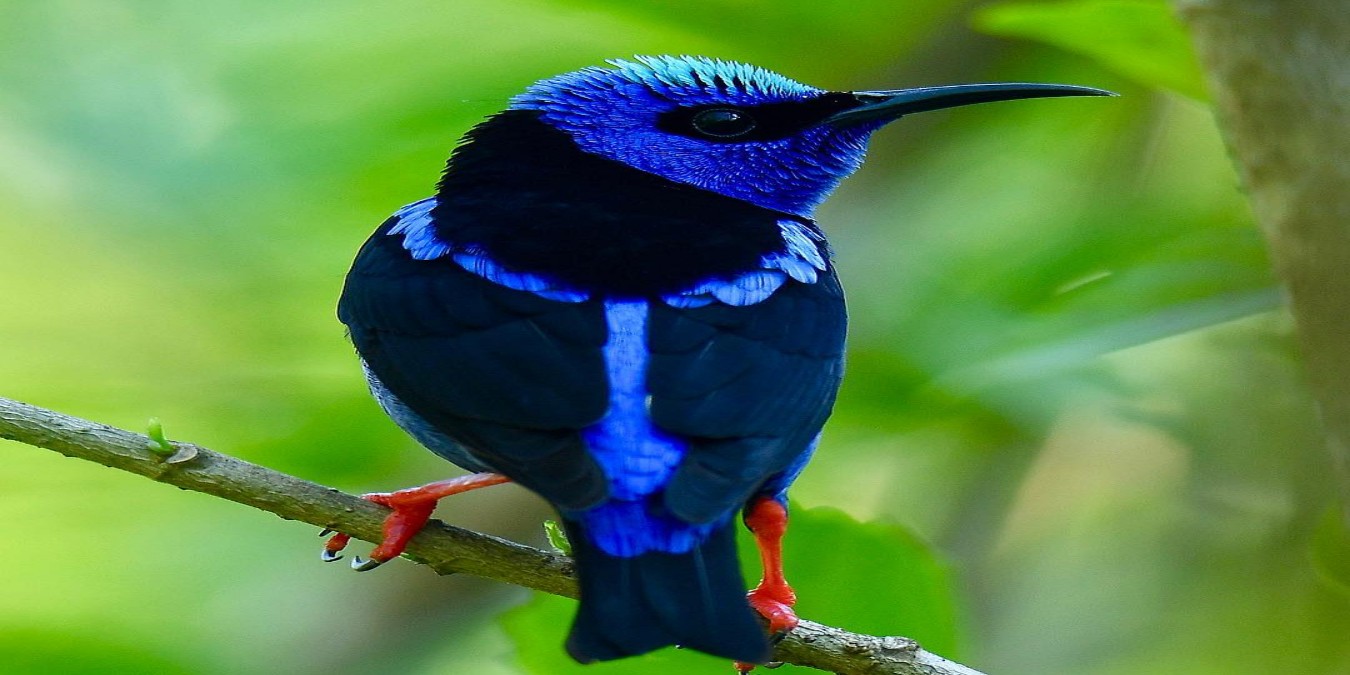Red-legged Honeycreeper (Cyanerpes cyaneus)
Length: ~13 cm (5 in)
The Red-legged Honeycreeper is among the most colourful bird species found in Trinidad and Tobago. A true forest dweller, it is most often seen foraging high in the canopy, particularly among emergent twigs and leaves. It is also attracted to the bright red flowers of the Norantea vine.
The male is striking: largely dark violet-blue with black plumage, a turquoise crown, and pale yellow patches on the underwing and inner flight feathers, visible only in flight. Its most distinctive feature, however, is its bright red legs, which distinguish it from related honeycreepers. After moulting, the male takes on a dull green appearance similar to the female, but can be told apart by his black wings and tail. Before the breeding season, he regains his vivid colours.
The species has a fine, slightly decurved bill adapted for nectar feeding. Nests are flimsy, cup-shaped structures of grass, roots, or moss, usually placed at a medium height in forest trees. Females perform most of the incubation and chick-rearing duties.
Red-legged Honeycreepers are often observed in small groups, sometimes family parties of about six individuals, foraging and perching together in the treetops. Despite their vibrant appearance, their canopy-dwelling habits make them surprisingly difficult to study.
- Photo captured by @beverly.w.cochran


Comments